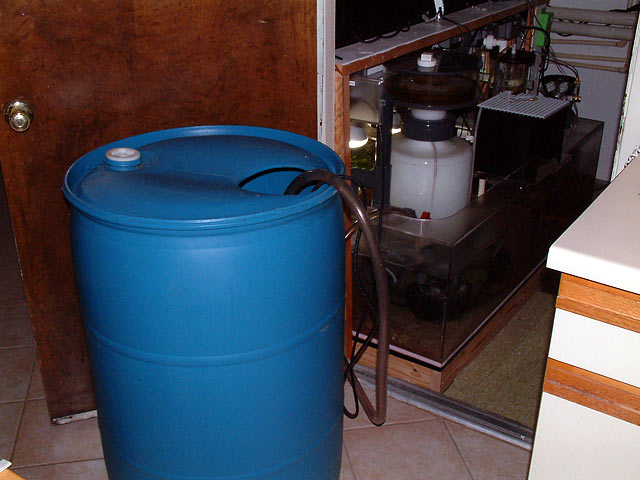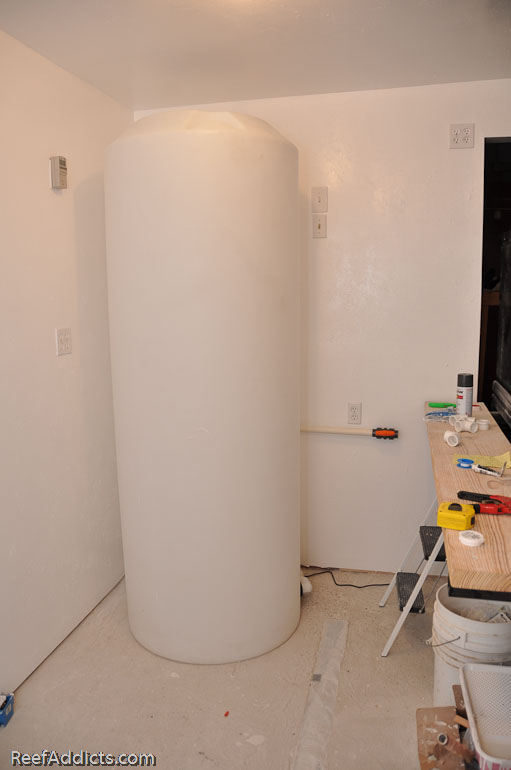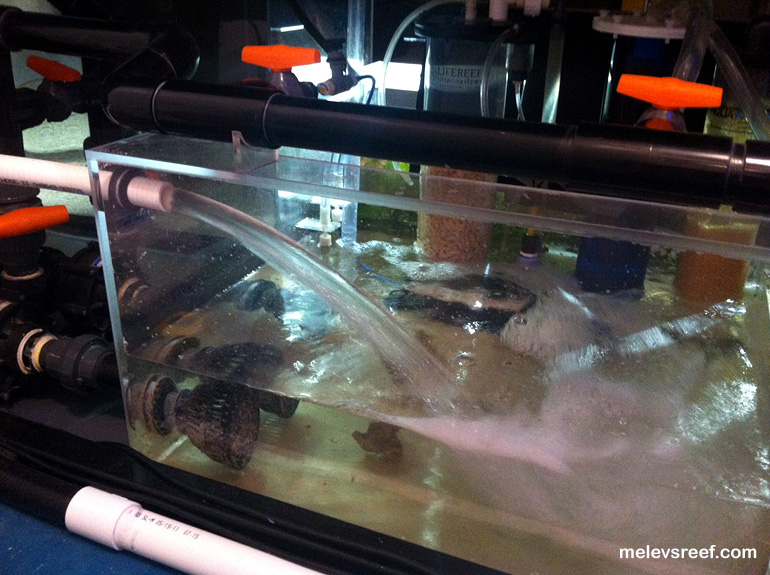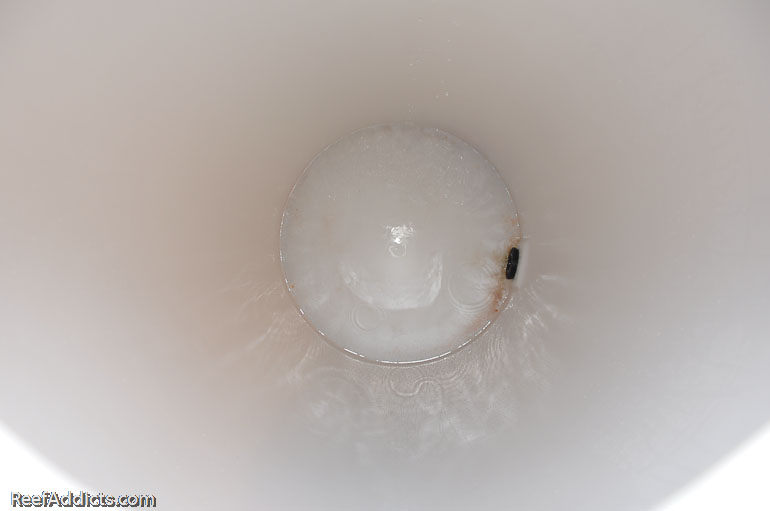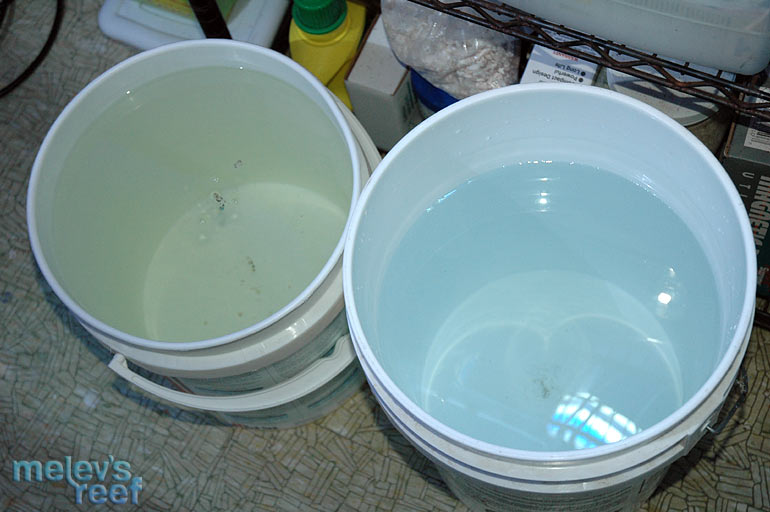My thoughts on saltwater for water changes
by
, 04-14-2013 at 11:05 PM (5228 Views)
Iv'e read some comments recently about some concern over stored saltwater and how it may lose its efficacy. I don't know that I can agree with that premise, but I'm not positive what all has been considered in that topic. Years ago, there was a thread discussing what how long experienced hobbyists wait to do a water change after the water has been mixed up, and a large number admitted that they'd use it within 5-15 minutes as well as up to 30 minutes... more than I would have expected.
Almost every brand and article I read states to mix it up and let it aerate for a number of hours, usually overnight. Barrels and other vessels don't get a build up on the walls in that time period. Myself, I prefer to let it mix for days rather than rush it, but I also clean out my barrels a couple of times a year. Maybe others don't do more than a simple rinse. When the barrel is empty, it is inverted until needed, and if it looks like it needs to be rinsed (cobwebs, leaves) out before being used again, I'll grab a garden hose and set it to jet-mode to get out foreign matter. It is filled up with RO/DI water, and then as soon as I have time I'll add the appropriate amount of salt to the barrel, and a large pump is used to mix it up. A heater is also immersed to get it to the required temperature. It may be ready the next day, but usually I'd get around to my water change several days later... because I was sick of a 55g barrel full of saltwater in my way.
2007:
When I remodeled my home to house the 265g poly tank for saltwater, I designed that set up with a circulation that pump that runs 24 hours a day. About four times a year, I refill the container completely with RO/DI water, add six bags of salt mix, and then I have water for at least two if not three months. I don't have to worry about water temperature since it is in the same room as the house, and the salinity doesn't change because the poly tank is sealed.
Come time for a water change, I siphon out water from the sump, paying attention to removing piled up detritus in the skimmer section and between the baffles. The skimmer is shut off, as are the heaters. I may even turn off the return pump and manifold pump if I want the water change to be somewhat big (50-60g). Once ready, I'll open up the valve from my saltwater vat and refill the sump with enough water that everything is at the proper level when turned back on.
If the saltwater in the poly tank did change over time, it doesn't show up on m test kits. The walls of the poly tank do show some brown slime looking stuff, but not scale nor any other build up. At least one a year, I turn the tank on its side and pour in some muriatic acid & water and then move the container back and forth to swish that solution. I do have to be careful when pouring in the acid that I don't breathe the fumes; the container is too big to get outside and thus I have to do this indoors. I hold my breathe for those seconds, then screw the lid back on. It quickly melts away the stuff with no scrubbing necessary. Once I've gotten all the walls swished down with the acidic solution, the container is set upright once more. Routing a garden hose into the fishroom, I'll rinse the inside of the container very well, letting the solution drain out the plumbing and into the french drain. Once I feel it is completely rinsed fresh of any pollutants, then the plumbing is reconnected to the pump, and RO/DI water trickles back in (at 16gph) until it is full again.
My last water change was two weeks ago. The saltwater in the holding tank was over two months old. My livestock seemed completely unaware of the 50g water change, and within two days I had fresh coralline spots appearing on the glass in many locations. The livestock is doing quite well, and water parameters are in check. I don't know why others may have different results with aged saltwater, but it would be good to know more about their exact procedures to learn more.
Finally, if you don't do water changes very often, do a test next time. Drain some water into a white bucket next to a new bucket of saltwater and see how it looks... odds are it'll look something like this.
When doing water changes, parameters that should match are salinity, temperature and pH. If you watch these numbers before any water change performed, results should be ideal.



